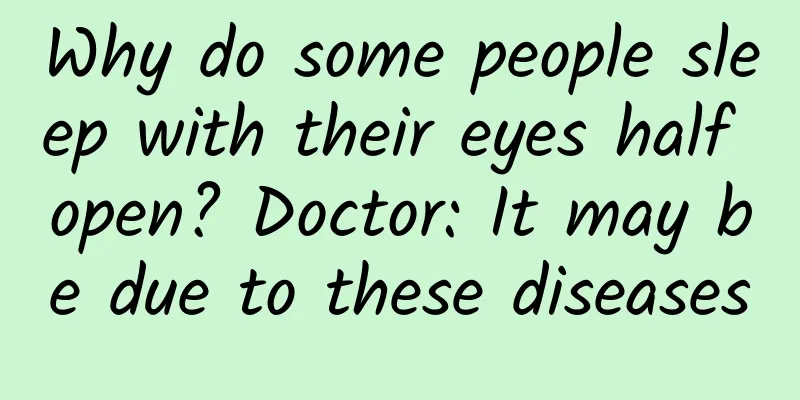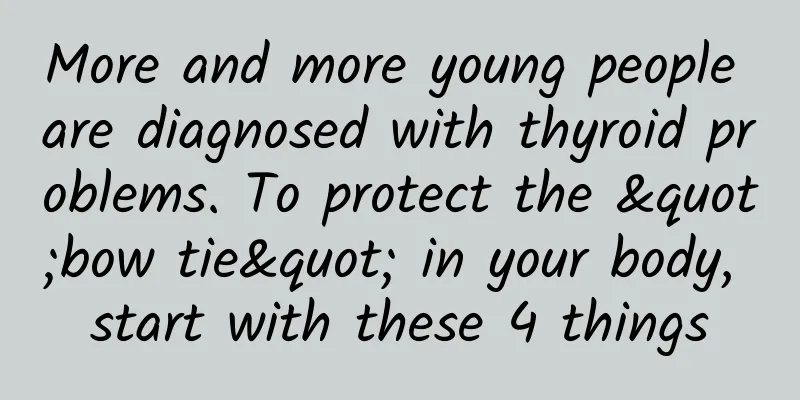Why do some people sleep with their eyes half open? Doctor: It may be due to these diseases

|
Expert of this article: Xu Qibin, associate chief physician, deputy director of ophthalmology department, Zhejiang Provincial Hospital of Integrated Traditional Chinese and Western Medicine You thought I was awake Actually, I fell asleep. In daily life There is such a group of people They sleep with their eyes half open It is easy to attract the attention of others To this Some friends who were "hit" complained Sometimes I can only sleep with my back to people Afraid of scaring others in addition Some people also think This is because the eyes are too big So What is the reason for sleeping with eyes half open? Is it harmful to the body? Can it be cured? You will understand after reading it ↓↓ What is it like sleeping with eyes half open? First of all, it should be made clear that sleeping with half-open eyes has nothing to do with the size of your eyes. Sleeping with half-open eyes refers to an eye sign or symptom, medically known as incomplete eyelid closure, also known as lagophthalmos, which can occur in one or both eyes. Under normal circumstances, when we fall asleep, our upper and lower eyelids are closed together, and the palpebral fissure disappears. The benefit of closed eyelids is that the human ocular surface (conjunctiva, corneal tissue) can be covered by the tear film, ensuring the absorption of nutrients, the smoothness of the ocular surface tissue, and the normal circulation of tears. A small number of normal people will have very slight incomplete eyelid closure after falling asleep, which has almost no harmful effect on the ocular surface tissue. Most of the incomplete eyelid closure is pathological. There are many reasons why the eyelids may not close completely, such as: Trauma causing local skin and eyelid tissue defects; Exophthalmos: thyroid-related eye disease, retrobulbar mass, intraorbital tumor, etc.; Facial nerve paralysis, resulting in paralysis of the orbicularis oculi muscle; Ectropion: Causes such as senility and scarring can all cause varying degrees of incomplete eyelid closure. What harm does sleeping with eyes half open have on your body? When you sleep with your eyes half open, many symptoms may occur due to varying degrees of incomplete closure of the eyelids. When sleeping, the conjunctiva and cornea of the eye surface tissues are exposed to the air for a long time, which can cause dry eyes, tearing, foreign body sensation in the eyes, conjunctival congestion and edema. In severe cases, it can cause corneal epithelial damage, shedding, and even corneal ulcers. Common non-healing conditions include corneal perforation, leading to endophthalmitis, etc. In addition, incomplete eyelid closure will definitely cause unsightly eyes and face. Can sleeping with half-open eyes be cured? Sleeping with half-open eyes is due to incomplete eyelid closure, so the treatment is to close it, and the treatment should be based on different causes. Most cases can be improved after treatment, but it is difficult to recover. 1. When the primary disease cannot be treated (such as corneal staphyloma, congenital glaucoma, etc. that are difficult to treat) or surgery is not possible, conservative treatment can often be performed. For example, artificial tears can be used frequently in the eyes during the day to prevent the eyes from drying out, keep the ocular surface tissue moist, and stabilize the tear film. Wet chamber lenses can also be used to protect the ocular surface. If there is inflammation or infection, you need to further use anti-infection and anti-inflammatory eye drops to repair the ocular surface tissue as soon as possible. When sleeping at night, you can apply chlortetracycline, ofloxacin eye ointment, etc. to close the open palpebral fissure and isolate the ocular surface tissue from the outside air. 2. Incomplete eyelid closure caused by ectropion, whether it is senile, scar or mechanical, generally requires surgical correction to return the eyelids to their normal position and allow the upper and lower eyelids to close naturally. 3. For exophthalmos caused by thyroid-related eye diseases, retrobulbar masses, orbital tumors, etc., the primary disease should be actively treated. Consult with the endocrinology department and neurosurgery department to reduce exophthalmos. 4. Patients with facial nerve paralysis are advised to go to the neurology department for examination, identify the cause, and actively treat it. At the same time, they should consult an ophthalmologist and treat the symptoms. 5. For patients who are bedridden for a long time or who have difficulty solving problems such as dry ocular surface tissue and keratitis with the use of eye drops or eye ointments, surgery to symmetrically suture the upper and lower eyelid margins can be performed to maintain passive eyelid closure and protect intraocular tissues. The pictures in this article with the "Science Popularization China" watermark are all from the copyright gallery. The pictures are not authorized for reprinting. |
>>: How dirty is the water in the water dispenser?
Recommend
How to manually backup your SMS/MMS on Android?
If you are going to change a phone or upgrade you...
Sparta Studio - Explanation of the 10 common types of account content selection for short videos
Course Catalog 1. Course Introduction (The price ...
LeTV’s goal is to create the ultimate “Queen’s Phone”?
There is less than a week left until the launch o...
Summary of 7 commonly used sorting algorithms in Java
I have been free for a while, so I took some time...
Hydrogen energy, it’s not easy to say I love you
Excerpted from: Inside and Outside the Classroom ...
CES 2017: A new track for driverless cars
In 2015, automotive electronics supplier Delphi A...
After the US election, California, a state with high tech density, may become independent
The American people have been trying to digest th...
The latest research! This exercise can delay brain aging and improve memory! Stick to it for 6 months and your brain will benefit for at least 5 years
Have you ever had a similar feeling: As I get old...
Some people say that the universe is just a biological cell. Do you believe it? Let science reveal the truth
This article is based on answering a question fro...
Hydration and moisturizing! 90% of people fail this introductory course
Review expert: Zhang Yuhong, chief physician of t...
2019 Bilibili product operation analysis report!
bilibili, also known as Bilibili or simply B Stat...
Weird! Watermelon has grown bean sprouts
Recently, a woman in Kaifeng, Henan, was shocked ...
China Automobile Dealers Association: China Automobile Retention Value Report in October 2022
On November 1, 2022, the China Automobile Dealers...
Xiaohongshu KOL promotion: the secret of note flow limitation!
After writing "Little Red Book KOL Promotion...
Say goodbye to inflammable and explosive materials! This battery that fights a desperate battle leads a new battery revolution
With the continuous advancement of science and te...









